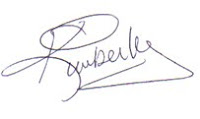In my opinion most successful architectural photographs exhibit these four qualities, which I believe are all of equal importance:
- Purpose
- View
- Light
- Execution
If your photograph fails on any of these points it will not successfully communicate to the viewer your design vision and project objective. This easily could leave you with substandard snapshots which will be limited in how the they can be used.
Purpose
Why you are photographing the subject? Are the photographs for your portfolio, a marketing campaign, competition entries, or to advertise a product or service? Among other things, your WHY?s help define your Usage in your photographer's Estimate. You don't want to pay Advertising Usage rights for an image that you may intend just be used as documentary.
View
Since you're familiar with a project as it was created, you have probably noticed more than one angle of view of a structure that really caught your eye. Be sure to convey this to your photographer, together you can identify the best camera positions to convey that purpose. This is where a site walk through or scout of the location with the photographer is so invaluable. Consider if there is a view that shows several features in one angle. Equally important, be sure to tell your photographer, and clearly identify aspects of a project you do not wish to highlight? This saves the photographer time, and you money.
Light
Orientation of a structure on a site often dictates when it looks the best. Is it in the morning or afternoon light or is it best at dawn or dusk? Is the natural and/or existing lighting sufficient or is it in need of supplemental lighting to make up for existing deficiencies or site limitations? Again the site walk through or scout visit can pay off exponentially.
Execution
With the tsunami of digital cameras and their built in programs it has become easier to make a “good” photograph. But, will you be happy with just "good"? Will it show off your capabilities to win that competition? Will it land your firm the next big project? The question is when is “good” not good enough. Anyone can snap a shutter, but it takes someone dedicated to the art of photography to how to process the camera’s auto-generated file for maximum quality.
The professional architectural photographer not only uses equipment capable of much higher resolution, we also use special lenses and supplemental lighting to capture an image that embodies your defined purpose. That image can be further refined through the use of specialty software and image processing techniques to maximize the success of the final photograph.
Among the many decisions you will need to make are: what is the purpose of these images, how important are these images to your marketing efforts, and will you have access to this subject again in its present condition?
We wish you the best in all your projects and if you need any help to understand terminology, approaches, technical aspects of photography, I’d be happy to speak with you about it.
Whether you were there or not, and whether we are your photographer on a project or not, if you have any questions or comments about commissioning architectural photography, please feel free to drop us a line anytime. We'd be happy to help!

Kimberly Blom-Roemer
Photographer
R2 Photography, LLC
r2-photography.com

Kimberly Blom-Roemer
Photographer
R2 Photography, LLC
r2-photography.com
866-722-9506

